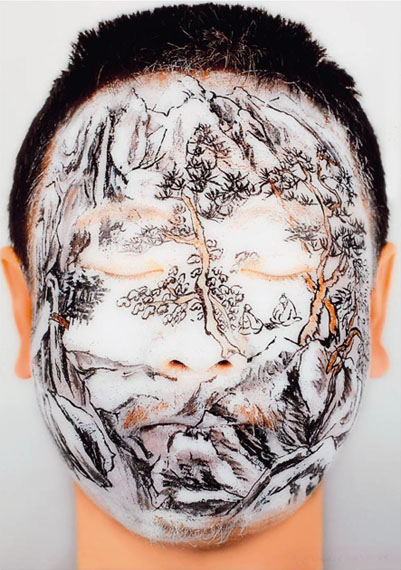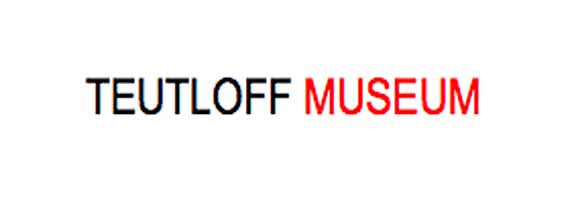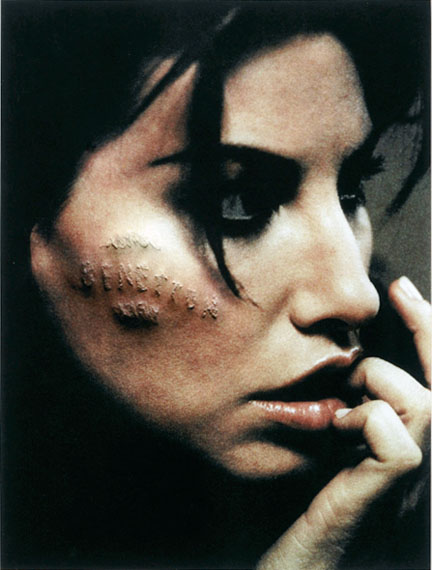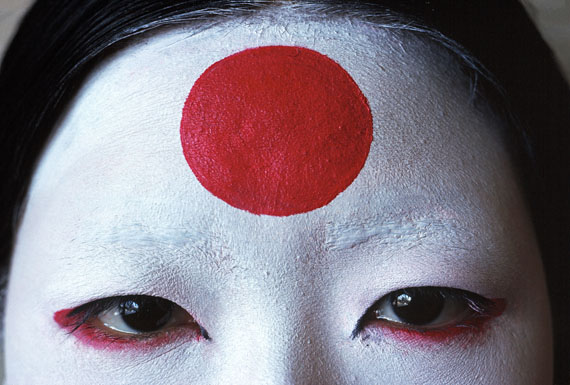
TATTOO - THE FACE OF FREEDOM
Daniele Buetti » Robert Doisneau » VALIE EXPORT » Alex Flemming » Alberto García-Alix » Margi Geerlinks » Lynn Hershman Leeson » Thomas Hoepker » Herbert Hoffmann » John Isaacs » Geoffrey Johnson » Kim Joon » Herlinde Koelbl » Robert Mapplethorpe » Michael Najjar » Dennis Oppenheim » Richard Prince » Leni Riefenstahl » Gundula Schulze Eldowy » Iké Udé » HUANG Yan » Xiaohu Zhou »
Exhibition: 2 Aug – 4 Aug 2013
Fri 2 Aug 18:00
Tattoo Convention Berlin
Luckenwalder Str. 4-6
10963 Berlin

Teutloff Museum
Weißenburger Str. 25
33607 Bielefeld
+49 (0)521-1368816

Tattoo – The Face of Freedom
Presentation @ TATTOO CONVENTION, Berlin 2-4 August, 2013
Opening: Friday, 2 August, 6 pm
The exhibition can also be visited virtually online until November 30, 2013 at www.teutloff-museum.
Curated by Prof. Peter Weibel, director of Center for Art and Media, ZKM Karlsruhe
The tattoo, originally “the tatau” ornaments the skin and thus abstracts everyday life. The Tattoo is a masquerade of the skin and marks th e body itself as the place of fantasy. Because through the painted body - through the tattoo - the body itself becomes exotic and therefore there is no normal everyday life anymore. Now there is only an exotic and erotic everyday life possible.
To cover the body with signs is like opening a door. A door to paradise,to another place, to an utopian place. The body itself becomes this heterotopos. The body itself becomes this utopian place. The door of the tattoo leads to the theater of illusions - just think of Genet -, to the theater of desires like in a dream. The door of the tattoo leads to the room of childhood, to the chambers of the unconscious.
To tattoo oneself is like inhabiting a house inside one’s own skin, is like living in a house you designed yourself. One revamps oneself with a tattoo. What is it that one revamps? One revamps something that was broken. The tattoo revamps the damaged life. The tattoo is a wallpaper - a second skin. Because the skin is a central arena of the phantasm of desire. The tattoed body is a fetish object.
The skin as an erogenous zone, is the arena of lust and of its taboos. Therefore tattoos and taboos are sisters and brothers. But who is the one who does not love the naked skin? But only the second skin, the painted, signed, tattooed skin. Tataus, tattoos are categories of the second skin. Tattoos, from the labia to the upper arms, are the hieroglyphics of the second skin. Clothing - bodices, corsages, latex, leather and rubber suits are like the flogged skin, injured skin, painted skin, pierced skin, tattooed skin - they all are conflicts on a borderline.
The skin is the border between the inside and the outside, between the system of the self and the system of the world between individual and social, between the self and the society. Who operates on this border, on the skin, wants to interfere with the agreements between the system of the self and the system of society, because he himself is disrupted by them.
The skin is that boundary, that arena, where the self tries to change the conventions and contracts between the systems of the self and the systems of society; where it tries to find and redefine the balance of self and world, of id, ego, and superego. Because in this battle of the conflicting parties, between sup erego and human drives, the tattooed transfers from the inside as far as possible to the outside, to this outmost boundary - the skin. Because he can’t bear this battle in any other way nor any longer.
Through the tattoo, the subject can violate and redraw and overwrite borders. Transgression is therefore the aim and the mark of the tatau. The skin is the arena of writing and thus of the law of the symbolic order, of the name of the father. As described in the myth of Oedipus , the tattooed does not accept this symbolic order. The tattooed acts as Anti-Oedipus. The place of the father remains empty. The tattooed turns the writing of the father into his own writing; Turns the writing of hell into the writing of paradise. He himself defines his social self, rewriting himself on his skin, describing himself anew, designing a new phantasmatic self.
From the silver dresses of Courrèges to the plastic dresses of Mary Quant, from the tied dresses of Versace to the safety pins, the piercings and tattoos of punk culture, but also up to the glamorous world of Haute Couture and of fashion models, we see that fashion is nothing but a gigantic industry of the second skin - the domesticated art of tattooing. Tattoos and piercings are little theater plays on the surface of the skin, stagings and masquerades, with the skin itself as the stage. It is exactly here where the drama of law takes place: subjection and revolt. The tattoed individual is the pirate in this drama.

Tattoo – The Face of Freedom
Präsentation auf der TATTOO CONVENTION, Berlin vom 2. bis 4. August 2013
Eröffnung: Freitag, der 2. August, 18 Uhr
Die Ausstellung ist darüber hinaus bis einschließlich 30. November virtuell auf www.teutloff-museum zu sehen.
Kuratiert von Prof. Peter Weibel, Leiter Zentrum für Kunst und Medientechnologie (ZKM), Karlsruhe
Das Tattoo, ursprünglich das Tatau, ornamentalisiert die Haut und abstrahiert damit den Alltag. Das Tattoo ist eine Maskierung der Haut und kennzeichnet den Körper selbst als Ort der Phantasie. Durch den bemalten Körper - durch das Tattoo - wird der Körper selbst exotisch. Der tätowierte Körper kennt keinen normalen Alltag mehr, es gibt nun mehr einen exotischen und erotischen Alltag.
Den Körper mit Zeichen zu bedecken ist wie das Öffnen einer Tür. Einer Tür zum Paradies, zu einem anderen Ort, zu einem utopischen Ort. Der Körper selbst wird dieser Heterotopos. Der Körper selbst wird dieser utopische Ort. Die Tür des Tattoos führt in das Theater der Illusionen, wie bei Genet, in das Theater der Wünsche wie im Traum. Die Tür des Tattoos führt in das Zimmer der Kindheit, in die Kammer des Unbewussten.
Sich zu Tätowieren ist wie ein Haus zu bewohnen, ein unheimliches Haus, das ein vertrautes Haus wird. In der eigenen Haut wie in ei nem Hause zu wohnen, das du selbst entworfen hast. Man richtet sich her mit einem Tattoo. Was richtet man her? Man richtet etwas her, das kaputt war. Das Tattoo richtet das beschädigte Leben her. Das Tattoo ist eine Tapete - eine zweite Haut. Die Haut ist nämlich ein zentraler Schauplatz des Phantasmas der Lust.
Wird das Subjekt, das Individuum durch die Tätowierung zum Fetischojekt? Die Funktion des Fetischobjektes ist es Übergangsobjekt zu sein. Durch die Tätowierung wird der Körper zu einem Übergangsobjekt zwischen dem Selbst und den Anderen. Die Haut dient dabei als erogene Zone und ist Schauplatz der Lust und ihrer Verbote. Wer ist aber derjenige, der nicht die nackte Haut liebt? Sondern nur die zweite Haut, die bemalte - die bezeichnete - tätowierte Haut.
Tataus - Tätowierungen sind eine Kategorie der zweiten Haut. Tätowierungen, von den Schamlippen bis zu den Oberarmen sind Hyroglyphen der zweiten Haut. Die Kleidung, das Mieder, das Korsett, die Lack-, Leder- und Gummianzüge, sind wie die gepeitschte Haut, die geritzte Haut, die bemalte Haut, die durchbohrte Haut, die tätowierte Haut. Sie alle sind Auseinandersetzungen mit einer Grenze. Die Haut ist diese Grenze zwischen Innen und Außen, zwischen dem System des Selbst und dem System der Welt, zwischen individual und sozial, zwischen Ich und Gesellschaft.
Wer also auf der Grenze der Haut operiert, will die vereinbarten Kontrakte zwischen dem System des Selbst und dem System der Welt stören, weil sie Ihn selbst verstören. Die Haut ist jene Grenze, jener Schauplatz, auf dem das Selbst versucht jene Vereinbarungen und Verträge zwischen den Systemen des Selbst und den Systemen der Welt zu verändern.
Der Tätowierte will die Balance zwischen Ich und Welt, zwischen Es, Ich und Über-Ich neu finden und neu definieren. Den Kampf der Konfliktparteien, des Über-Ichs und der menschlichen Triebe, verlagert der Tätowierte von innen so weit wie möglich nach außen, an diese äußerste Grenze, die Haut, weil er diesen Kampf nicht anders und nicht länger mehr ertragen kann. Mit dem Tattoo kann das Subjekt Grenzen überziehen, überzeichnen, überschreiben. Grenzüberschreitung ist das Ziel und das Zeichen des Tatau.
Die Haut ist der Schauplatz der Schrift. Damit des Gesetzes der symbolischen Ordnung - des Namens des Vaters. Der Tätowierte akzeptiert diese symbolische Ordnung nicht, wie im Ödipusmythos beschrieben. Der Tätowierte agiert als Anti-Ödipus. Der Platz des Vaters bleibt leer. Der Tätowierte verwandelt die Schrift des Vaters inseine eigene Schrift. Die Schrift der Hölle in die Schrift des Paradieses. Sein soziales Selbst definiert der Tätowierte selbst, in dem er auf der Haut sich selbst umschreibt und neu bezeichnet und neu phantasmasiert.
Von den silbernen Lederkleidern Courrèges zu den Plastikkleidern der Mary Quant, von den verschnürten Kleidern Versaces zu den Sicherheitsnadeln, den Piercings und Tätowierungen der Punkkultur, aber auch bis in die mondäne Welt der Haute Couture und Fashion-Modells, sehen wir, dass die Mode nichts anderes ist als eine einzige gigantische Fabrik der zweiten Haut, eine domestizierte Kunst der Tätowierung.
Tätowierungen und Piercings sind kleine Bühnenstücke auf der Oberfläche der Haut, Inszenierungen und Maskierungen, wobei die Haut selbst die Bühne ist. Genau hier ereignet sich das Drama des Gesetzes: die Unterwerfung und die Auflehnung. Der Tätowierte ist der Pirat im Drama des Gesetzes.

